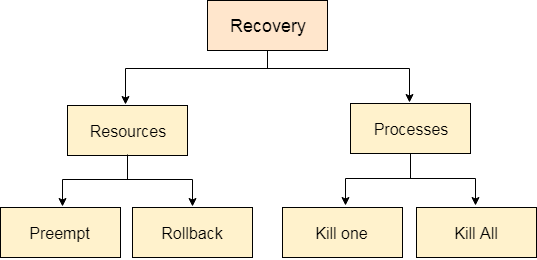

Now we will cover Process Termination and Resource Preemption Process Termination These are two options that are mainly used to break the deadlock. There one possibility and that is to inform the operator about the deadlock and let him deal with this problem manually.Īnother possibility is to let the system recover from the deadlock automatically. When a detection algorithm determines that a deadlock exists then there are several available alternatives. This algorithm may require an order of mxn² operations in order to determine whether the system is in a deadlocked state. Moreover,if Finish=false,then process Pi is deadlocked.

If If Finish = false for some i, 0<=i If Allocationi is not equal to 0,then Finish = false else Finish = trueĤ. The Given detection algorithm is simply used to investigate every possible allocation sequence for the processes that remain to be completed.ġ.Let Work and Finish be vectors of length m and n, respectively. It is an n*m matrix that is used to indicate the request of each process if Request equals to k, then process Pi is requesting k more instances of resource type Ri.Īllocation and Request are taken as vectors and referred to as Allocation and Request. It is an n x m matrix which represents the number of resources of each type currently allocated to each process. It represents the number of available resources of each type. This algorithm mainly uses several time-varying data structures that are similar to those used in Banker's Algorithm and these are as follows: 1. Now we will move towards a deadlock detection algorithm that is is applicable for such systems. The above scheme that is a wait-for graph is not applicable to the resource-allocation system having multiple instances of each resource type. The algorithm that is used to detect the cycle in the graph mainly requires n² operations where n indicates the number of vertices in the graph. In order to detect the deadlock, the system needs to maintain the wait-for graph and periodically system invokes an algorithm that searches for the cycle in the wait-for graph. An edge Pi, Pj exists in a wait-for graph if and only if the corresponding resource allocation graph contains two edges Pi,Rq and Rq,Pj for a resource Rq.Ī deadlock exists in the system if and only if there is a cycle in the wait-for graph. This wait-for graph is obtained from the resource-allocation graph by removing its resource nodes and collapsing its appropriate edges.Īn edge from Pi to Pj in a wait-for graph simply implies that process Pi is basically waiting for process Pj in order to release a resource that it needs. If all the resources have only a single instance, then a deadlock-detection algorithm can be defined that mainly uses the variant of the resource-allocation graph and is known as a wait-for graph. Now, the main task of the operating system is to detect the deadlocks and this is done with the help of Resource Allocation Graph. After Finding the deadlock the operating system will recover from it using recovery techniques. Thus order to get rid of deadlocks the operating system periodically checks the system for any deadlock. In this case, the system may provide two things:Īn algorithm is used to examines the state of the system in order to determine whether a deadlock has occurred.Īn algorithm that is used to recover from the deadlock. If a system does not employ either a deadlock-prevention or deadlock-avoidance algorithm, then there are chances of occurrence of a deadlock. In this tutorial, we will be covering the concepts of Deadlock detection and recovery. 



 0 kommentar(er)
0 kommentar(er)
